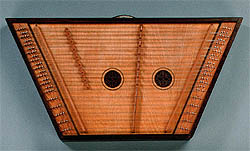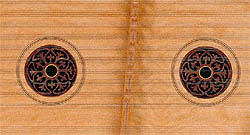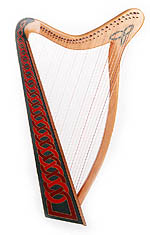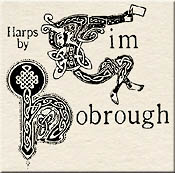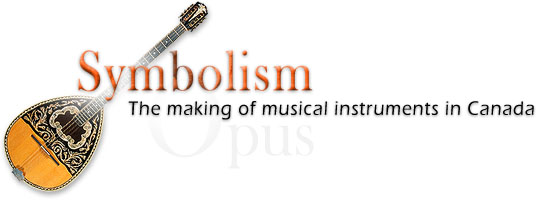
| Opus 89 - Dulcimer |
|
|
The dulcimer is a pre-eminent traditional instrument. In the British Isles, it accompanies reels, jigs and hornpipes. In Hungary, a similar but larger instrument, the cimbalom, accompanies traditional dances. The dulcimer also plays a role in symphonic works. One of the world's most ancient instruments, the harp appeared in Europe around the ninth century. It is considered a noble instrument, associated with King David, who is often portrayed holding one in paintings. In Ireland and Scotland, the harp, known in Gaelic as clàrsach, enjoyed a prominent position beginning in the tenth century. It was used until the eighteenth century and became Ireland's emblem.
In the early nineteenth century, during the burgeoning Celtic revival in Dublin and Edinburgh, organizations such as the Dublin Harp Society were established to restore the tradition of the harp. John Egan, a Dublin instrument maker, invented a modern clàrsach for novice musicians. Lighter in construction, this harp had gut strings and hand-operated levers to raise the pitch of the strings by a semitone. The instrument is sometimes called the Celtic or neo-Irish harp. Based on the modern clàrsach, the harp shown here has thirty strings, made of nylon. The soundbox, which consists of a single piece of carved cedar taken from a church organ pipe, bears a traditional magical knot motif, and the head of the pillar is decorated with a stylized bird. Tim Hobrough has been making instruments since 1972. After apprenticing for two years under Michael Dunn in Vancouver, he received a Canada Council grant in 1976 to study early harps in European collections. He settled in Scotland in 1978 and opened a workshop in the village of Beauly in 1989. He crafts a wide array of harps, including medieval, Renaissance, baroque, Irish and Celtic, and medieval instruments such as the dulcimer, psaltery and lyre.
|
 |


